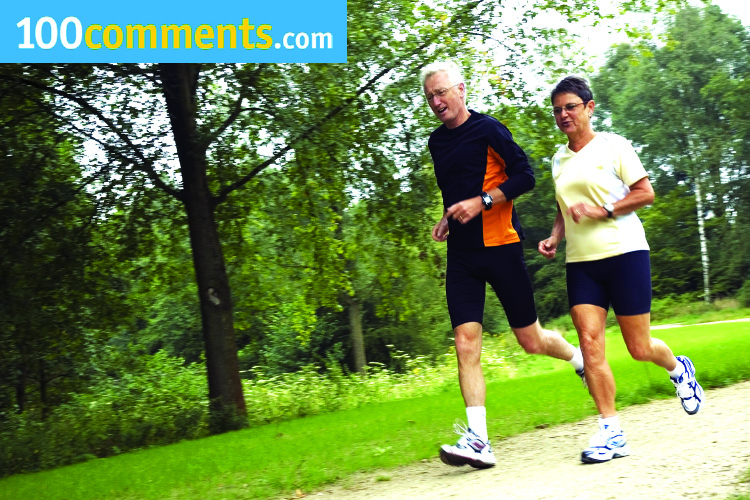Osteoporosis is a condition characterised by a decrease in the density of bone, decreasing its strength and resulting in fragile bones resulting in frequent fractures. Although osteoporosis affects the elderly, mainly women of postmenopausal age, but men and women of all ages are also susceptible as well. If you suffer from osteoporosis, it is understandable if you fear exercising. Read on and understand how important is exercise – more so if you have osteoporosis. Done correctly, you can avoid broken bones resulting in loss of mobility and independence, and allow regular exercise to strengthen you.
Table of Contents
Let’s Start!
If you’ve always been an active person, that’s great. But it’s certainly not late to start as exercise will increase your muscle strength and improve your balance and keep your bones from growing weaker faster. Exercise helps you to build and maintain the amount and thickness of your bones, and as living tissues, bones respond to exercise by becoming stronger.
Consult Your Doctor First
A word of caution. Consult your doctor before you start any type of exercise. Your doctor would be the best person to advise on what exercise is appropriate for you. If necessary, you doctor may put you through a bone density test and fitness assessment.
Choosing The Right Form of Exercise
It is important that you choose a safe exercise that you enjoy, simply because you tend to stick with an exercise you like than one you don’t in the long run. Essentially, there are three types of activities that are recommended for people with osteoporosis, all important to build healthy bones:
• Weight-bearing
• Resistance
• Flexibility
Weight-bearing Exercises
Weight-bearing exercise means any exercise that allows your feet and legs to support your body weight. Some examples include:
• Walking
• Jogging/Running
• Hiking
• Stair Climbing
• Dancing
• Tennis
Although great sports like bicycling and swimming are good for your heart and lungs, however they are not weight-bearing exercise for osteoporosis. That’s because you are being held up by something other than your feet and legs, such as the bicycle or the water.
As a basic rule, walking for three to five miles a week can help build your bone health. For general health, most experts recommend that everyone gets at least half an hour of moderate to vigorous exercise five times a week. Forty-five minutes to an hour is even better.
Resistance Exercise
Resistance means you’re working against the weight of another object. Resistance helps with osteoporosis because it strengthens muscle and builds bone. Studies have shown that resistance exercise increases bone density and reduces the risk of fractures.
Resistance exercise for osteoporosis includes:
- Free weights or weight machines at home or in the gym
- Resistance tubing that comes in a variety of strengths
- Water exercises – any movement done in the water makes your muscles work harder
For best results, do resistance exercises two or three times a week. Make the exercise more challenging by gradually adding weight or repetitions. Work all your different muscles – including arms, chest, shoulders, legs, stomach, and back. Be sure not to do resistance training on the same muscle group two days in a row. Give each muscle group time to recover.
Flexibility Exercise
Flexibility is another important form of exercise for osteoporosis. Being able to move your joints through their full range of motion helps you maintain good balance and prevent muscle injury. Increased flexibility can also help improve your posture. When your joints are stiff, your abdominal and chest muscles become tight, pulling you forward and giving you a stooped posture.
Examples of flexibility exercise for osteoporosis include:
• Regular stretches
• T’ai chi
• Qigong
• Yoga
Stretches are best performed after your muscles are warmed up — at the end of your exercise session, for example. They should be done gently and slowly, without bouncing. Avoid stretches that flex your spine or cause you to bend at the waist. These positions may put excessive stress on the bones in your spine (vertebrae), placing you at greater risk of a compression fracture. Ask your doctor which stretching exercises would be best for you.
Keep Safety In Mind
Weight-bearing exercise does not have to be high impact. Running, jogging and jumping may add stress on your spine which may lead to fractures in weakened bones. If you already have bone loss, choose gentler weight-bearing exercise like walking, dancing, low-impact aerobics, and gardening.
If you already have osteoporosis, be careful of exercises that involve bending and twisting at the waist. This motion can put you at risk of fracture. Exercises that involve waist twisting include sit-ups, toe touches, and rowing machines. Golf, tennis, bowling, and some yoga poses also include some twisting at the waist. Talk to your doctor before choosing any of these activities.
















